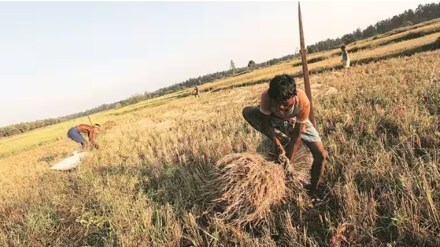The latest set of numbers put out by the leading fast moving consumer goods companies doesn’t inspire much confidence about the state of demand in rural India. Nor do many other proxy markers of the rural economy, like farm credit/exports or reservoir water levels, which indicate that the consumption demand in the rural sector hasn’t really recovered from the shock of the second wave of Covid. The rural woes had worsened even before the pandemic—the World Bank estimates that real rural wages in India have stagnated over the last decade. With elevated inflation, real wages in the hinterland are seen to have fallen through FY23 and much, if not all, of H1FY24. This sharply contrasts with the decent 7.5% growth reported for private consumption expenditure in the last fiscal year, and the Reserve Bank of India (RBI) survey that showed a four-year peak in overall consumer confidence in September 2023. Clearly, it is the urban areas that are holding the fort.
Though the crop damage caused by unseasonal (pre-monsoon) showers and uneven distribution of monsoon rainfall may have contributed to the longevity of the rural torpor, it has deeper underlying reasons. There is a shift in terms of trade away from the farmer and the average rural worker/trader, contrary to what policymakers claim. Wages are nearly half of rural household income, and well over a third is realisation from farming. There has been a lack of policy impetus to boost farm- and non-farm wages over several years. At the same time, the income support to farmers in the forms of minimum support prices (MSPs) and direct cash transfers (PM Kisan) have seemingly been offset by high inflation. The rise in farmers’ income has lagged that of other sections of the society, including large companies, and HNIs, undermining the rural purchasing power.
Policymakers cite food inflation outpacing inflation in other items and the sustained caps on prices of urea and other farm inputs including electricity to argue that terms of trade have started favouring the farmer. Though these steps and extension of the MSP procurement to larger areas of the country may have come to the aid of rural population, the benefits have apparently been wiped out by the sharp decline in non-farm rural income, in a rapidly formalising economy. As such, over 40% of rural income comes from non-farm activities. Of course, there have been some good tidings of late from rural India. According to the periodic labour force survey, monthly earnings of regular workers in rural areas jumped 11.6% on year in Q1FY24, the fastest rate in at least five years, although casual wage growth is still anaemic. The survey also revealed that rural unemployment rate fell to a five-year low of 2.4% in the quarter. Further, the CMIE rural joblessness rate fell to a 12-month low 6.2% in September.
However, since the infirmity of the sector is not seasonal, it is necessary to address the issue with a well-planned policy response. To be sure, the stagnant rural sector reflects a larger structural shift in the economy, the brunt of which is borne by small businesses and (highly leveraged) households. The recent policy steps, like seeking to contain food inflation through easing of imports and curbs on exports, would only aggravate the problem. What’s needed is sustained effort to raise farm productivity and output, and improve price discovery of farm produce.
